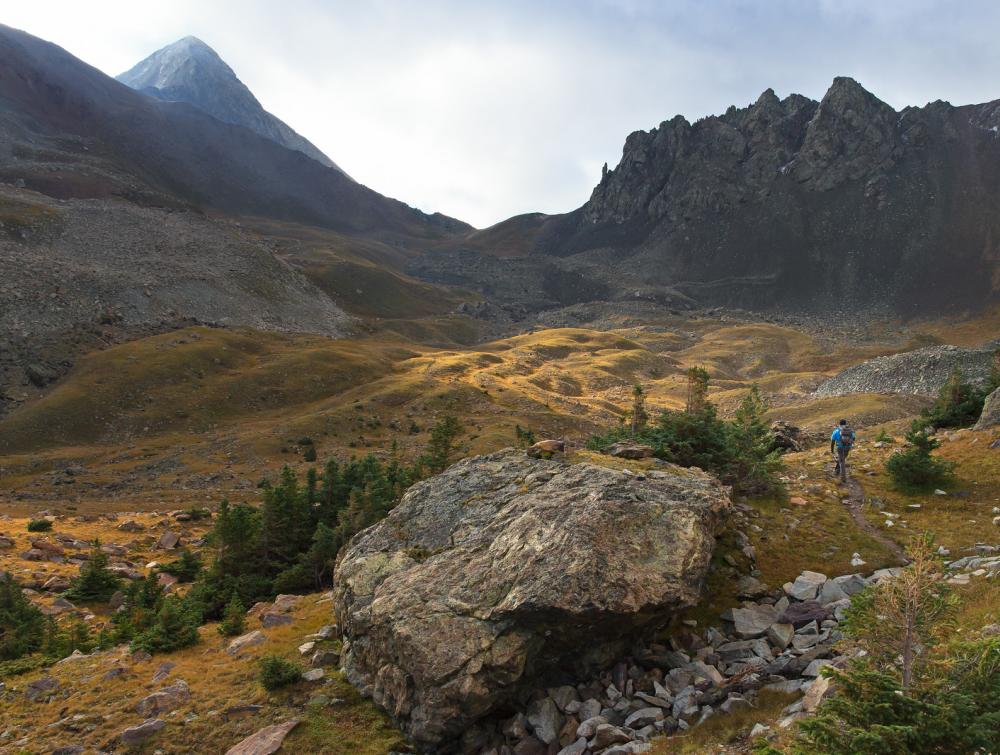Wilderness Designation FAQs

Casey McCallister, flickr
Since the Wilderness Act passed in 1964, Congress has designated nearly 112 million acres of federal wildlands as official wilderness. Official wilderness has the highest form of protection of any federal wildland.
Today, about 235 million acres of federal wildlands have been permanently protected as wilderness, parks, refuges or other protected areas. But that’s only a third of our public lands. And about 100 million acres of pristine wildlands are still at risk. These wildlands could qualify for future protection, but the window of opportunity is closing fast.
A designated wilderness area receives the government’s highest level of land protection and becomes part of the National Wilderness Preservation System.
Q: What can I, or anyone for that matter, do in Wilderness?
A: Just about anything that is lawful activity and does not harm the wilderness or require a vehicle is permitted. A list of popular activities:
- Hiking
- Camping
- Horseback riding
- Hunting
- Fishing
- Photography
- Bird watching
Q: America currently celebrates nearly 112 million acres of Wilderness. Why protect more?
A: It turns out that 112 million acres is less than five percent of the total U.S. land base, and when you factor out Alaskan wilderness, it's just two percent the lower 48 states.
Our plan for the 21st century is to see many more acres of federal public land added to the National Wilderness Preservation System.
Q: What is “multiple-use” and what does it mean when referring to Wilderness?
A: The "multiple-uses" of wilderness, according to law, include:
- Protection of watersheds
- Habitat for wildlife, including rare and endangered species
- Maintenance of soil and water quality, ecological stability and plant and animal gene pools
- Unsurpassed opportunities for outdoor recreation including hunting, fishing, hiking, and camping
Q: Is motorized transportation (cars, bikes) totally prohibited in wilderness areas?
A: No. But the Wilderness Act allows the use of vehicles where necessary to insure the health and safety of people.
Q: Can fire and damaging insects be controlled in wilderness areas so they don’t spread to surrounding lands?
A: Yes. The Wilderness Act states that "such measures may be taken as necessary in the control of fires, insects and diseases" within wilderness.
Q: Does wilderness designation discriminate against the disabled?
A: No. Those with disabilities may use wheelchairs within wilderness. The Americans With Disabilities Act of 1990 reaffirmed that nothing in the Wilderness Act should be construed as prohibiting the use of a wheelchair a wilderness area by individuals whose disability requires it. A report by the National Council on Disability found that "[a] significant majority of persons with disabilities surveyed very much enjoy the [National Wilderness Preservation System] and 76 percent do not believe that the restrictions on mechanized use stated in the Wilderness Act diminish their ability to enjoy wilderness. People with disabilities appear to visit the NWPS in the same ways and for the same reasons that people without disabilities do."
Q: Does wilderness designation affect water rights?
A: Wilderness designation does not affect existing water rights. A wilderness bill signed into law in year 2000 bears a 2000 priority date, junior to all existing water rights. Thus, wilderness water rights do not supplant other, more senior rights.
In addition, wilderness water rights apply only to unappropriated water. A wilderness water right only ensures that when water is available, wilderness gets its fair share.
Wilderness water rights are in-stream flow rights. They are not consumptive water rights, meaning that the water flows through wilderness, and then flows out, unpolluted and available for other uses.
In sum, wilderness water rights fully respect other water rights on the stream. They cannot disrupt existing rights, facilities or project operations.
